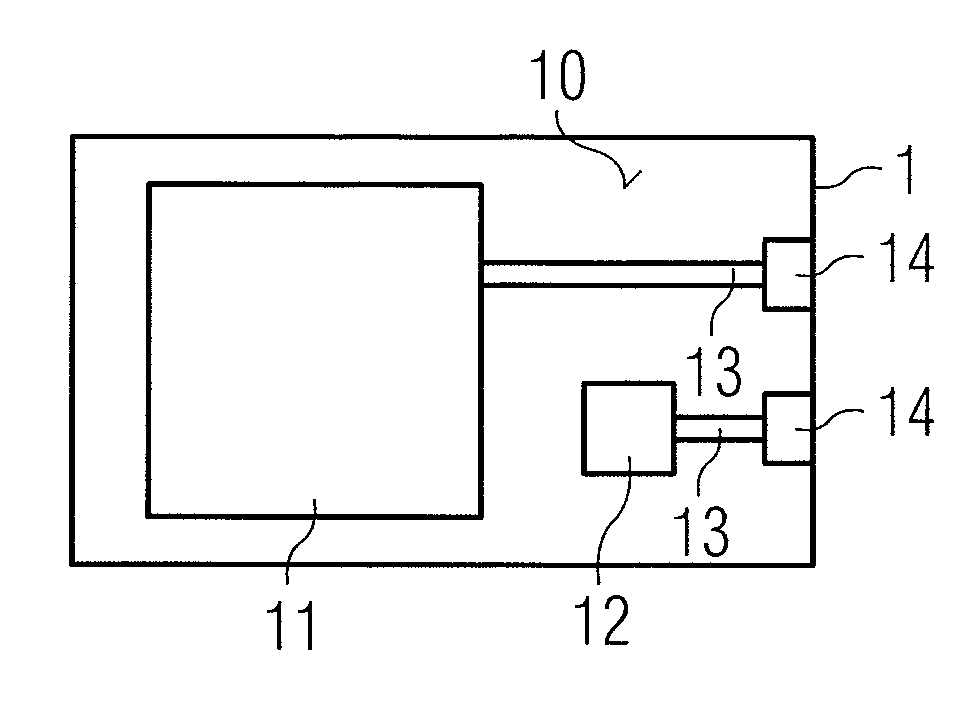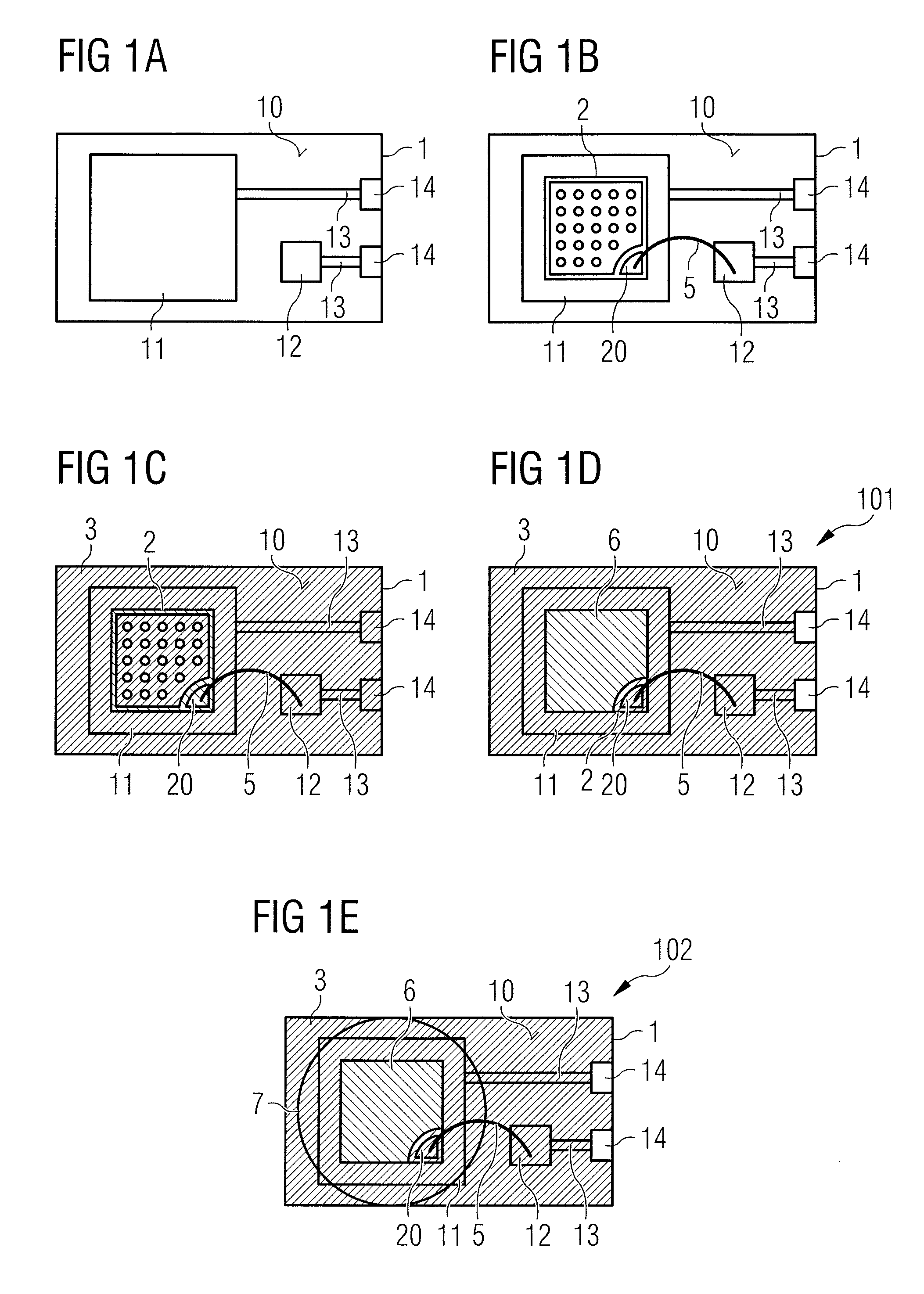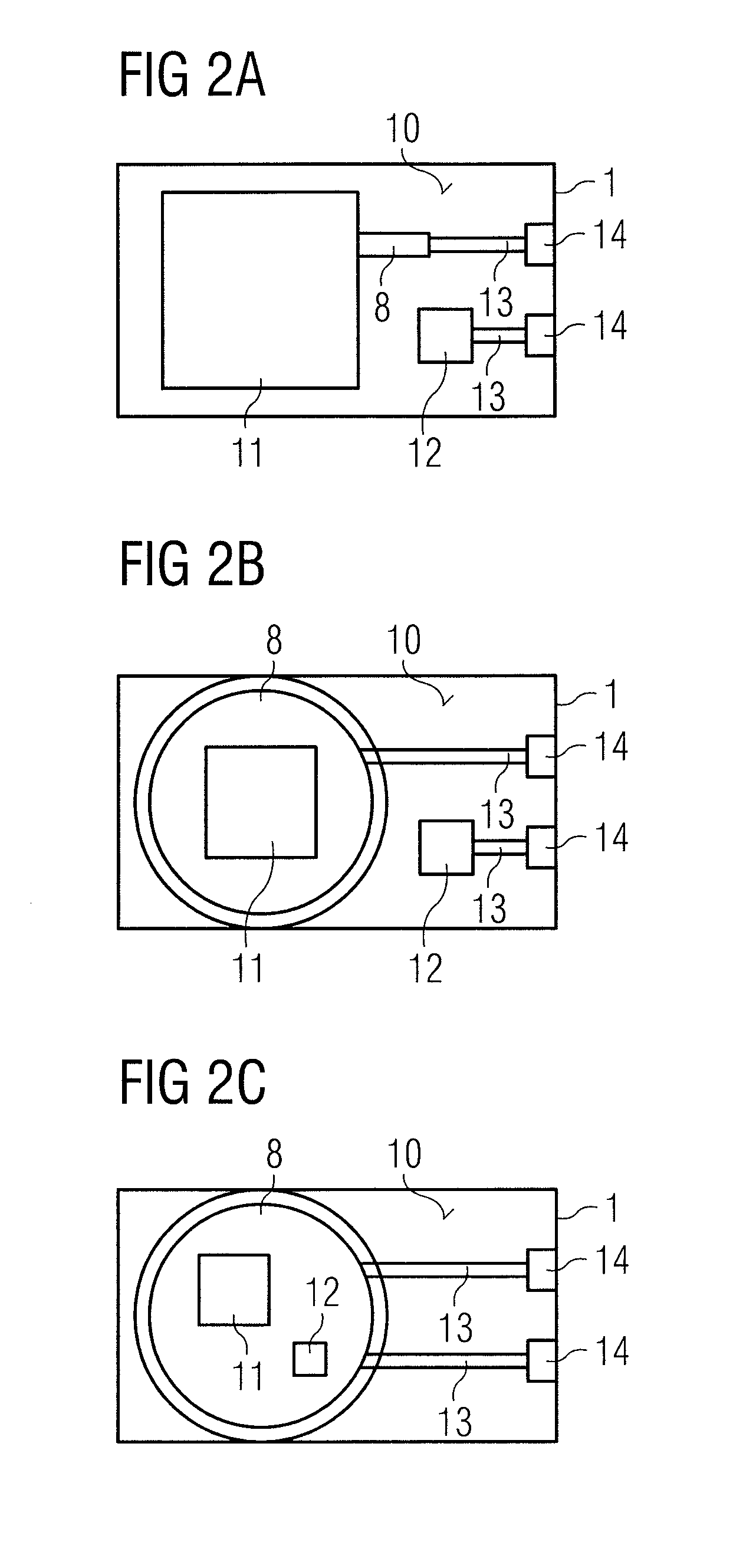Method for Producing a Light-Emitting Semiconductor Component and Light-Emitting Semiconductor Component
a technology of light-emitting semiconductors and semiconductor components, which is applied in the direction of semiconductor/solid-state device manufacturing, semiconductor devices, electrical devices, etc., can solve the problems of inability to optimize chip design and packaging for maximum efficiency, and the protection of light-emitting diodes is not completely clear. , to achieve the effect of reducing the absorption of light, increasing the efficiency of emitted light, and increasing stability
- Summary
- Abstract
- Description
- Claims
- Application Information
AI Technical Summary
Benefits of technology
Problems solved by technology
Method used
Image
Examples
Embodiment Construction
[0049]A method for producing a semiconductor component 101 in accordance with one exemplary embodiment is shown in conjunction with FIGS. 1A to 1D.
[0050]A first method stop in accordance with FIG. 1A involves providing a carrier 1, which has contact regions 11, 12 and also electrical connection regions 14 on a mounting area 10. The contact regions 11, 12 and pad regions 14 are connected to one another by means of conductor tracks 13 on the carrier 1. In particular, in the exemplary embodiment shown, the carrier 1 is embodied as a ceramic carrier, on which the contact regions 11, 12, the connection regions 14 and the conductor tracks 13 are embodied as a coating. The connection regions 14 are embodied as n- and p-type contacts.
[0051]In a further method step in accordance with FIG. 1B, a semiconductor chip 2 is provided and is mounted and electrically connected on the mounting area 10 of the carrier 1.
[0052]The semiconductor chip 2 is mounted and thus simultaneously electrically conne...
PUM
 Login to View More
Login to View More Abstract
Description
Claims
Application Information
 Login to View More
Login to View More - R&D
- Intellectual Property
- Life Sciences
- Materials
- Tech Scout
- Unparalleled Data Quality
- Higher Quality Content
- 60% Fewer Hallucinations
Browse by: Latest US Patents, China's latest patents, Technical Efficacy Thesaurus, Application Domain, Technology Topic, Popular Technical Reports.
© 2025 PatSnap. All rights reserved.Legal|Privacy policy|Modern Slavery Act Transparency Statement|Sitemap|About US| Contact US: help@patsnap.com



